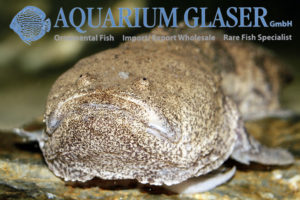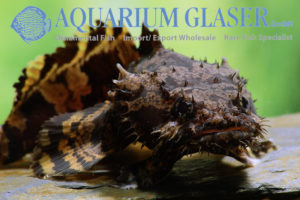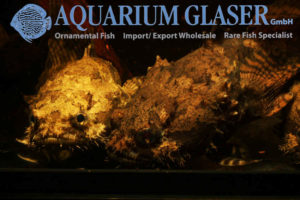The toadfishes a very odd creatures. A total of about 73 species exists which are placed in around 22 genera and three subfamilies. One of these subfamilies – the Thalassophryninae – is also known as the “venomous toadfishes”. Thalassophryne amazonica, one of the very few freshwater species of the family, is placed in that subfamily. […]
16. Toadfishes (5)
-
-
Allenbatrachus grunniens
Nobody would keep this fascinating frogfish from South East Asia due to its coloration. The bizarre shape and the expressive eyes nevertheless make it a desirable species for the aquarium. This frogfish lives in the wild in river mouths; although it is possible to keep the fish in pure freshwater, it is better to add […]
-
Allenbatrachus grunniens
Nobody would keep this fascinating frogfish from South East Asia due to its coloration. The bizarre shape and the expressive eyes nevertheless make it a desirable species for the aquarium. This frogfish lives in the wild in river mouths; although it is possible to keep the fish in pure freshwater, it is better to add […]
-
Allenbatrachus grunniens
Code: 373102
-
Allenbatrachus grunniens
(01.Feb.2008) Toadfish – a funny name for a funny family, the Batrachoididae. There are only 73 representatives of this family worldwide. Their name is coming from noises which they can generate and sounds like the callings of toads. Toadfish have a venomously spine on the gills and their dorsal fin and when you catch them, […]







